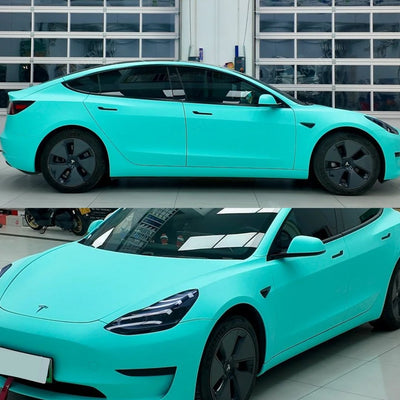The Texas window tint laws prescribes limits of darkness and reflectivity for tints on vehicle windows. These enable you to have some leeway in customizing your rides while supporting the cause of road safety. The legislation came into place in 2009 and has seen several amendments concerning VLT, exemptions, and other such key issues ever since.
Understanding what the state precisely puts into place will help one stay free from legal issues. Herein is a detailed study of the essential provisions under Texas tint legal laws: allowable levels of tint darkness, limits of reflectivity, and exceptions.

Car Window Tint Darkness In Texas
The percentage of light allowed through your film and glass in Texas is very specific and different for sedan cars and SUV cars or vans.
Tint darkness for sedans:
- Windshield: 25% VLT tint is allowed above the manufacturer’s AS-1 line or top 5 inches, with less than 25% reflection.
- Front Side windows: Must allow more than 25% of light in.
- Back Side windows: Any darkness can be used.
- Rear Window: Any darkness can be used with side outside mirrors, 25% VLT without.
Tint darkness for SUV and vans:
- Windshield: 25% VLT tint is allowed above the manufacturer’s AS-1 line or top 5 inches, with less than 25% reflection.
- Front Side windows: Must allow more than 25% of light in.
- Back Side windows: Any darkness can be used.
- Rear Window: Any darkness can be used with side outside mirrors, 25% VLT without.
Tint Light Reflectance Law in Texas
Apart from the level of darkness, Texas tint laws also concern the reflectivity or the mirror-like character of the window tinting. Too much reflectivity could blind other drivers and obscure their visibility, which may be hazardous to drive around. The following are the regulations for window tint reflectivity in Texas:
It allows a reflective tint, provided that the reflectivity should not be more than 25%. The reflectivity level at the rear side windows was not mentioned. However, for good visibility, a minimum of reflectivity has been suggested.
Other Texas Window Tint Rules And Regulations:
Texas does have several other important laws, rules and regulations about window tinting. They include the following:

1. Side Mirrors: Vehicles with tinted back windows should have double side mirrors. In this way, the device guarantees visibility and safety while driving.
2. Used colors: Red, blue and amber tinting colors are restricted on windshields It is non-complaint with Texas tint laws, making it difficult to see through these colors.
3. Film Certification: Tint film manufacturers must certify the films they sell in Texas. Confirm your dealer is using certified tint film upon installation for your car.
4. Stickers: A sticker indicating legal tinting must be affixed between the film and glass on the driver’s side window. This sticker is proof that the tint complies with state laws.
Texas Window Tint Exceptions And Special Considerations
Exceptions and Special Considerations in Texas Tint Laws These relaxed regulations are in effect in the following situations:
Medical Exemptions: Those who have certain medical conditions that necessitate limited exposure to sunlight may qualify for a medical exemption. Thanks to this exemption, they are now able to use the window tints with VLT lower than 25 percent for the two front-side windows (but not on the windshield). "To be eligible for this exemption, the written certification of a physician or optometrist licensed under the laws of Columbia is necessary.
It must be clear that the driver has a medical condition and the reason(s) why a darker tint than what is allowed by law is required. This document has to always stay in the vehicle for its presentation, if you want, law enforcement officer and during the annual vehicle inspection.
Commercial and Law Enforcement Vehicles: Some vehicles that are used for commercial purposes or by law enforcement agencies may have different tint requirements. They also often need privacy and security, which can be achieved with darker tints.
Historical/Classic Cars: Historical and classic vehicles may be granted greater leniency in window tint to maintain the authenticity and appearance of the vehicle.
Legal Consequences Of Non-Compliance With The Texas Window Tint Laws
Failure to follow Texas tinting laws will also have legal consequences. Police can issue tickets and ask owners to remove or adjust illegal tint from their vehicles. Furthermore, driving a car with illegal tints will even affect the insurance policy, hence increasing the rate of premiums. Therefore, adhering to these will be significant in order not to bring forth these inconveniences.

A police officer may ticket you if your tint is outside of the legal limit. The amount you are required to pay depends on the following:
- How far outside the legal limit was your tint was
- How many illegal tint tickets have you received
- Did you remove the illegal tint after being previously ticketed
You may be fined about $20 to $25 for a first offense and be requested to remove the tint. On the second ticket, if you don't comply, it may be much more expensive, including court fees that can reach about $300.
These are set to ensure safety among drivers, passengers, and the public. A too-dark tint may block out the visibility that is necessary for preventing accidents. Also, the legal tints help law enforcement officers easily find any illegal activities happening within vehicles.
































1 comment
What if my car was tinted in Illinois where a sticker between the film and glass isn’t required, and the transmission amount is Texas legal, and I move to Texas? Do I have to get a sticker installed between the film and glass?